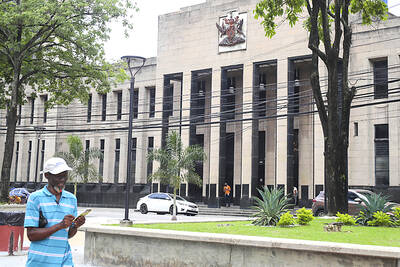To block US proposals for building missile defenses in Europe, Russian President Vladimir Putin surprised the White House in June with a counteroffer to let the US use one of the Kremlin's most secret early-warning radars.
That Russian radar, in Azerbaijan, a neighbor of Iran, has since been a central focus of negotiations between Washington and Moscow. But much about it had remained mysterious.
Now, the first US military officer to see the Russian radar said on Friday that he had come away from the visit with three significant impressions.
The radar is huge, almost twice the size of a similar US system. Despite its reliance on outdated vacuum-tube technology, the system is extremely able as an early warning radar scanning the skies over the Middle East.
But the officer, Major General Patrick O'Reilly, deputy director of the Pentagon's Missile Defense Agency, also said that the Russian early warning system would not be an adequate replacement for the US radar proposed for the Czech Republic, which is designed for very precise tracking and focusing on targets.
After Putin's offer this summer of access to the radar, O'Reilly led a six-member team to the site in Azerbaijan in mid-September, the first time US military officers had been allowed inside one of Russia's most secret installations.
Despite the system's older technology, "I was impressed by what I saw," O'Reilly said. "It would be a false impression to dismiss the capabilities they have. They just chose another way of achieving it. It is an excellent radar for the case of early warning."
The radar has been well maintained and upgraded since its design in the 1970s and construction in the 1980s, prompting O'Reilly to report back to Washington that the Russian system offers an extremely desirable ability for early warning of a ballistic missile attack from a country like Iran.
That analysis prompted the US to invite Russia to link the radar to a US and NATO missile defense system in Europe, which would include a radar system in the Czech Republic and 10 missile interceptors in Poland.
But O'Reilly stressed that the Russian radar was not designed to perform the same function as the US radar proposed for the Czech Republic.
The US radar is intended to track specific targets and then precisely guide an interceptor to destroy a warhead, something the Russian radar cannot do, since it was designed to scan larger areas but with less detail, he said.
O'Reilly's comments come as Congress is poised to cut US$85 million from the proposed budget for the European missile defense system until Poland and the Czech Republic agree to accommodate the sites. Bush administration officials had hoped for agreements by the end of this year, but now they are not expected before next year. The Polish and Czech parliaments must approve the agreements.

IDENTITY: A sex extortion scandal involving Thai monks has deeply shaken public trust in the clergy, with 11 monks implicated in financial misconduct Reverence for the saffron-robed Buddhist monkhood is deeply woven into Thai society, but a sex extortion scandal has besmirched the clergy and left the devout questioning their faith. Thai police this week arrested a woman accused of bedding at least 11 monks in breach of their vows of celibacy, before blackmailing them with thousands of secretly taken photos of their trysts. The monks are said to have paid nearly US$12 million, funneled out of their monasteries, funded by donations from laypeople hoping to increase their merit and prospects for reincarnation. The scandal provoked outrage over hypocrisy in the monkhood, concern that their status

Trinidad and Tobago declared a new state of emergency on Friday after authorities accused a criminal network operating in prisons across the country of plotting to kill key government officials and attack public institutions. It is the second state of emergency to be declared in the twin-island republic in a matter of months. In December last year, authorities took similar action, citing concerns about gang violence. That state of emergency lasted until mid-April. Police said that smuggled cellphones enabled those involved in the plot to exchange encrypted messages. Months of intelligence gathering led investigators to believe the targets included senior police officers,

A disillusioned Japanese electorate feeling the economic pinch goes to the polls today, as a right-wing party promoting a “Japanese first” agenda gains popularity, with fears over foreigners becoming a major election issue. Birthed on YouTube during the COVID-19 pandemic, spreading conspiracy theories about vaccinations and a cabal of global elites, the Sanseito Party has widened its appeal ahead of today’s upper house vote — railing against immigration and dragging rhetoric that was once confined to Japan’s political fringes into the mainstream. Polls show the party might only secure 10 to 15 of the 125 seats up for grabs, but it is

Philippine President Ferdinand Marcos Jr is to meet US President Donald Trump this week, hoping Manila’s status as a key Asian ally would secure a more favorable trade deal before the deadline on Friday next week. Marcos would be the first Southeast Asian leader to meet Trump in his second term. Trump has already struck trade deals with two of Manila’s regional partners, Vietnam and Indonesia, driving tough bargains in trade talks even with close allies that Washington needs to keep onside in its strategic rivalry with China. “I expect our discussions to focus on security and defense, of course, but also